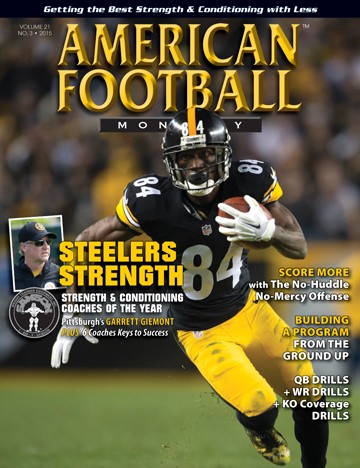Article CategoriesAFM Magazine
|
Speed Report: Visual Cues Deliver Exceptional Speedby: Dale BaskettFootball Speed Specialist © More from this issue Football players must rely heavily on having good field vision in order to play fast and move effectively. It’s a huge benefit having good visual skills which enhances “transition speed”. More specifically, angle and velocity changes executed with maximum velocity. Many athletes are naturally gifted with good visual skills. Unfortunately, many athletes also struggle with this skill. The good news is that you can develop this ability by using designed drills correctly and specific cues and techniques accurately.
|
|
|||||||
| HOME |
MAGAZINE |
SUBSCRIBE | ONLINE COLUMNISTS | COACHING VIDEOS |
Copyright 2025, AmericanFootballMonthly.com
All Rights Reserved





